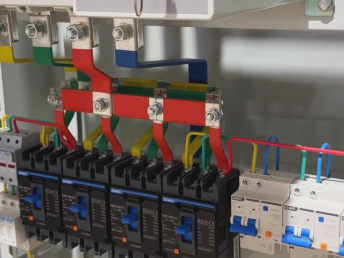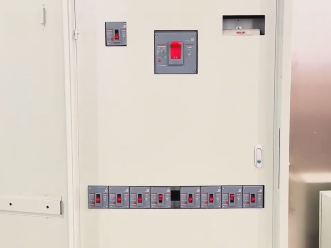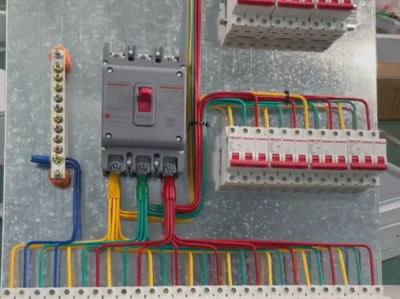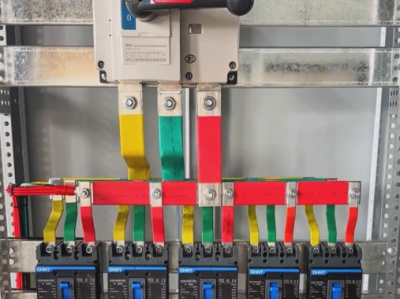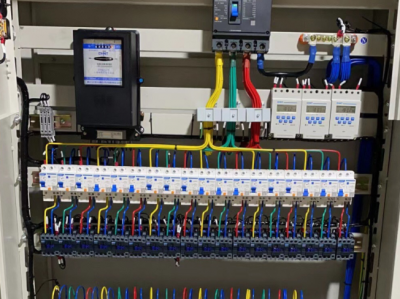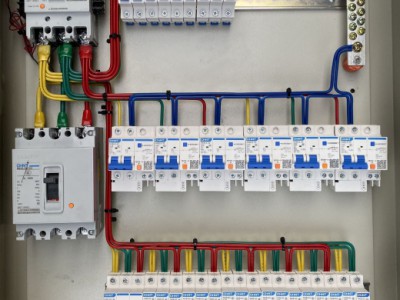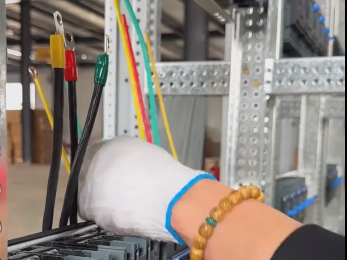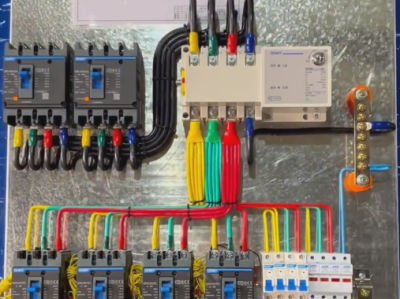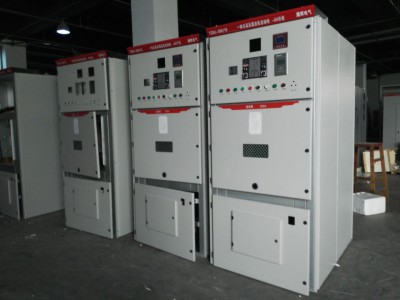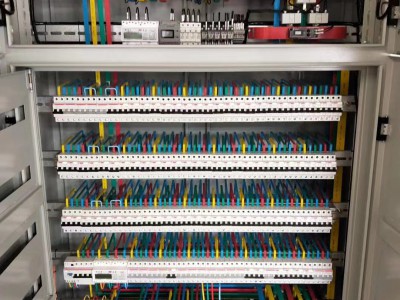Processing OEM Fan Control Cabinets
Product description
YouTube:https://youtube.com/shorts/OhWl2JWHaRg
# Processing Flow
1. **Design Stage**: Based on customer requirements and specific parameters of the fan, design the electrical schematic diagram, cabinet structure and layout of the control cabinet. During the design process, full consideration should be given to the control requirements of the fan, such as start-stop, speed regulation, forward and reverse rotation functions, as well as protection functions like overload, short circuit, overcurrent, and leakage protection. Meanwhile, issues such as heat dissipation and electromagnetic compatibility of the control cabinet also need to be taken into account.
2. **Cabinet Manufacturing**:
- **Material Selection**: Cold-rolled steel plates are usually selected as the main material for the cabinet. The thickness is generally between 1.0 mm and 2.0 mm, and an appropriate thickness is chosen according to the size and strength requirements of the cabinet. For some special environments, such as humid and corrosive environments, stainless steel plates may be required or special surface treatments may be carried out.
- **Cutting**: Use a plate shearing machine to cut the cold-rolled steel plates into the required sizes. The cutting size accuracy is generally controlled within ±0.5 mm to ensure the precision of subsequent processing and assembly.
- **Bending**: Use a bending machine to bend the cut steel plates into various parts of the cabinet. The bending angle accuracy is generally controlled within ±1°, ensuring the structural strength and appearance flatness of the cabinet.
- **Welding**: Adopt the welding process to weld the bent parts together to form the frame and shell of the cabinet. The quality of welding directly affects the strength and sealing performance of the cabinet. It is required that the welds are uniform, firm, and free from defects such as pores and cracks.
- **Surface Treatment**: Conduct surface treatment on the cabinet, such as plastic spraying or painting, to improve the anti-corrosion and anti-rust abilities as well as the appearance quality of the cabinet. The coating after surface treatment should be uniform, smooth, and free from defects such as flow marks and blisters.
3. **Installation of Electrical Components**:
- **Component Selection**: According to the design requirements, select appropriate electrical components, such as circuit breakers, contactors, relays, fuses, buttons, indicator lights, frequency converters, PLCs, etc. The quality of electrical components directly affects the performance and reliability of the control cabinet, so it is necessary to choose products that are reliable in quality and comply with national standards.
- **Installation and Fixing**: Install the selected electrical components on the mounting plate inside the cabinet according to the design layout, using fixing methods such as screws and guide rails to ensure that the components are firmly installed and accurately positioned.
- **Wiring**: Wire according to the electrical schematic diagram. The wiring should be firm, neat and beautiful, avoiding problems such as looseness and short circuits. After the wiring is completed, conduct circuit inspection and insulation testing to ensure that the circuits are correctly connected and have good insulation.
4. **Debugging and Testing**:
- **Function Debugging**: Debug various functions of the control cabinet, such as the control functions of start-stop, speed regulation, forward and reverse rotation of the fan, as well as protection functions and alarm functions. During the debugging process, it is necessary to check whether the actions of electrical components are accurate and reliable and whether the logic of the control system is correct.
- **Performance Testing**: Test the electrical performance of the control cabinet, such as insulation resistance, grounding resistance, and withstand voltage test, to ensure that the electrical performance of the control cabinet meets national standards and customer requirements.
- **Simulated Operation**: Conduct simulated operation in the actual operating environment to check the operation of the control cabinet under different working conditions, such as full load, overload, short circuit, etc., and promptly discover and solve potential problems.
### Quality Control
1. **Inspection of Raw Materials**: Conduct strict inspections on purchased raw materials such as cold-rolled steel plates and electrical components to check whether their specifications, models, and quality meet the design requirements, ensuring the reliable quality of raw materials.
2. **Control of the Processing Process**: Strengthen the quality control of each processing link during the cabinet manufacturing and electrical component installation processes, and strictly operate in accordance with the technological process and quality standards to ensure that the quality of each link meets the requirements.
3. **Inspection of Finished Products**: Conduct a comprehensive inspection of the processed OEM fan control cabinets, including appearance inspection, function debugging, and performance testing. Only products that pass the inspection can leave the factory.
4. **Quality Certification**: Obtain certifications such as ISO 9001 Quality Management System Certification and CCC Certification to prove that the enterprise's processing and production processes and product quality meet national and international standards, and improve the product's quality reputation and market competitiveness.
### Customization Services
1. **Customization of Control Functions**: Customize the control functions of the fan according to different customer needs, such as manual control, automatic control, remote control, etc., as well as different control strategies, such as constant speed control, variable frequency speed regulation control, etc.
2. **Customization of Cabinet Dimensions**: Customize control cabinets of different sizes according to customers' installation space and usage requirements to meet customers' personalized needs.
3. **Customization of Appearance Color**: In order to match the overall appearance of customers' equipment, provide customized services for the appearance color of the cabinet, such as standard colors like RAL 7035 light gray, RAL 9005 black, or customize according to the color cards provided by customers.
4. **Customization for Special Requirements**: For some special environments and special application occasions, such as explosion-proof, anti-corrosion, dust-proof, and waterproof requirements, provide corresponding customized solutions to ensure that the control cabinet can still operate normally in harsh environments.
#PowerDistribution #SubstationTransformer #ElectricalEngineering #PowerTechnology #TechReview # 1500kVA #wankongPower 761 #wankongtransformer #transformer #electrical #technology #factory #foryou #viral #shortvideo #manufacture #machine #power #shorts #trending #wiring #factorywork #electricalengineering #powertransformer

